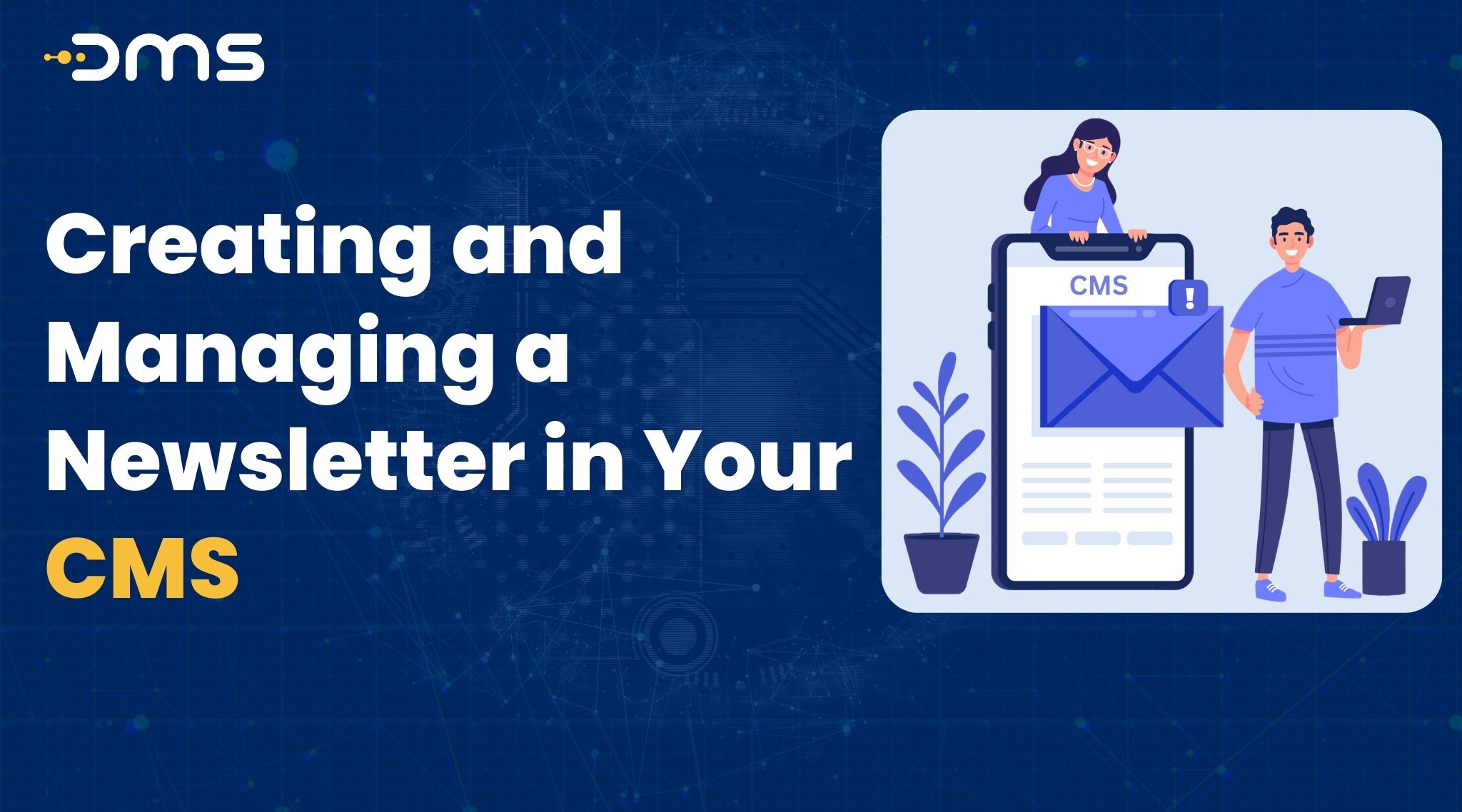Managing a newsletter in your cms is a great way to keep your readers interested in and updated about your company or brand. A CMS, or content management system, like WordPress or Drupal, makes it much easier to create and maintain newsletters. We’ll walk you through the procedures in this article so you may establish and oversee an email newsletter in your content management system.
Understanding newsletters and their benefits
A newsletter is a regularly distributed email that contains news, updates, and promotional content related to your business or brand. Managing a newsletter in your cms is an excellent way of keeping your readers updated and interested in your company. You may use them to foster connections with your subscribers, raise brand awareness, improve website traffic, and even increase sales.
Choosing a CMS for your newsletter
You need a CMS that supports email marketing to create and manage a newsletter. One may generate and manage emails using modules and plugins that are accessible through major content management systems like the WordPress platform, Drupal, and Joomla.
Setting up your newsletter in your CMS
Once you have chosen a CMS, you need to set up your newsletter. This typically involves installing a plugin or module that allows you to create and manage newsletters. Based on the CMS you’re using, the procedure will differ, but most modules and plugins will walk you through the setup procedure.
Creating a newsletter template
The next step is to create a newsletter template. Your template should be visually appealing and consistent with your brand. Either use a pre-designed theme provided with your CMS plugin or module or make your own template using HTML and CSS.
Adding content to your newsletter
After making the template, you can begin filling it with information for your newsletter. Your content should be interesting, instructive, and pertinent to your readers. Articles, blog posts, videos, images, and other sorts of content are all acceptable.
Personalizing your newsletter
Personalizing your newsletter can help increase engagement and build a stronger relationship with your subscribers. By dividing your email list, adding the subscriber’s name, and offering relevant information depending on their interests, you may customize your newsletter.
Testing and previewing your newsletter
Therefore need to verify and preview your newsletter to make sure it functions and appears as intended before sending it to your subscribers. Most CMS plugins and modules offer testing and previewing features that allow you to send a test email and preview how the newsletter will appear on different devices.
Scheduling and sending your newsletter
You can schedule your newsletter to be sent at a particular time and date after testing and viewing it. One may use this to prepare in advance and ensure the email blast arrives at the ideal moment for maximum effect. Most CMS plugins and modules offer scheduling features that allow you to set the date and time for your newsletter to be sent.
Analyzing your newsletter’s performance
After sending your newsletter, it’s important to analyze its performance. To determine how well your newsletter is functioning, you can evaluate statistics like rates of openings, rates of clicks, and unsubscribe rates. You can use this data to inform your decisions regarding upcoming mailings and enhance your approach to email marketing.
Managing your newsletter subscribers
Building and managing a newsletter in your cms requires careful management of your subscriber list. You must keep your list of subscribers current and make sure you are only emailing people who have specifically requested to receive them. Most CMS plugins and modules offer subscriber management features that allow you to add, remove, and update subscriber information.
Dealing with bounced emails
Bounced emails are emails that are returned to the sender because they could not be delivered. There are several potential causes for this, including an incorrect email address or an enormous mailbox. It’s important to deal with bounced emails promptly and remove them from your subscriber list to maintain a healthy email list.
Avoiding spam filters
Users of email are protected from unsolicited and unwelcome messages by spam filters. Implementing recommended practices for email advertising, such as eliminating spam trigger words using a concise and clear subject line, and offering an unsubscribe link, will help you avoid having your newsletter marked as spam.
Staying up-to-date with email marketing trends
It’s crucial to keep up with the most recent trends and best practices in email marketing because it’s a field that is continuously changing. This can include things like using personalization, segmenting your email list, and using automation to improve your email marketing strategy.
Measuring the success of your newsletter
Measuring the success of your newsletter is essential to improving your email marketing strategy. To assess the effectiveness of your newsletter and plan ahead for future ones, you can utilize data like opening rates, rates of clicks, and rates of conversion.
Conclusion
Creating a connection with your subscribers and promoting your brand can be accomplished by creating and managing a newsletter in your content management system (CMS). You can produce an effective email that engages your subscribers and directs visitors to your website by following these steps.
By understanding your audience, creating engaging content, designing visually appealing newsletters, incorporating compelling CTAs, personalizing your communication, and analyzing campaign performance, you can optimize the impact of your newsletters and achieve your marketing goals. Embrace the potential of newsletters as a valuable tool in your marketing arsenal, and watch as your brand’s reach and influence grow.


